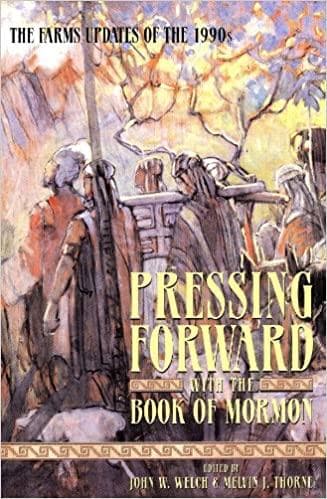Book
69 Chapters

“And behold, there was all manner of gold in both these lands, and of silver, and of precious ore of every kind; and there were also curious workmen, who did work all kinds of ore and did refine it.” (Helaman 6:11)
Orthodox archaeologists have for many years supposed that metals were not used in Mesoamerica, the probable area where Book of Mormon events took place, until nearly five hundred years after the scripture says the Nephites were destroyed. Of course the Book of Mormon briefly mentions the use of metal among the Nephites (although by the time of its mention in Mosiah 11:8, metal was “precious”). Previous attempts to refute the prevailing view have had little effect. Renewed research has revealed a substantial body of data on the subject that was previously ignored.
An intensive survey of the literature reporting archaeological and metallurgical investigations in the area, made possible by a donation from Mark Cannon, now shows that between fifty and one hundred specimens from about forty sites predate the A.D. 900 “metal curtain” claimed by the archaeologists.1 In some cases the actual status of a piece proves hard to pin down from published statements, but at least two-thirds of the total were found by experienced archaeologists whose reports seem reliable. These known fragments date back to at least 100 B.C.
Typically when one of these “anomalous” specimens has been reported, the accompanying statement goes something like this: “Since we know that metals date only after A.D. 900, in all probability this specimen was intruded into our archaeological feature by latecomers to the site, or else the site itself is later than it otherwise seems.” In one famous case, metal fragments were found in a cache constructed beneath a stela at Copan, Honduras, dated A.D. 782 by its inscription. A respected analyst suggested that the objects “were gathered together and inserted into the vault (much later), perhaps by a band of pilgrims visiting the deserted ceremonial center.” In fact this scenario directly contradicts the judgment of the excavator. The suggestion that ragtag visitors would dig beneath a massive stela at an abandoned site to find the cache put there by those who erected the monument and then put pieces of scarce copper in among earlier artifacts instead of looting the deposit is unsupported by a single known case of similar behavior. Yet logic little more compelling than this is not infrequent in the reports.
There is another line of evidence that supports the idea that metal was in use earlier than usually thought. Works of art—human figures carved on stone or in ceramic—show what are quite surely metal objects. The dates range as early as 300 B.C.
Even more compelling is linguistic evidence. Based on words that are similar in different Mesoamerican languages current in recent centuries, linguists have reconstructed “protolanguages” that consist of words that apparently were in use centuries ago. Differences between similar terms in present-day languages are understandable to linguistic scientists if there was a word in the protolanguage from which the present terms descended, but such variations are puzzling if there was not. Linguists can also make reasonable estimates of the time it took for these variations to develop.2 In five major language families of Mexico and Guatemala, terms for metal have been reconstructed, and in each case the date given to account for the divergences in the daughter tongues exceeds 1000 B.C. This means that speakers of the parent languages way back then had a word for metal. That they would all have had a word without having any metal seems highly unlikely. If archaeologists have good luck, they will someday find pieces of metal that date as early as the names do.
This research makes clear that there is more information about Mesoamerican metal than had been previously brought together, and that information suggests that metal was used before the experts have said it was.
At least two methodological lessons are taught by the study of “old” source materials such as those examined in this project: (1) “Everyone knows” can be a convenient excuse for going along with prevailing views that seem to challenge scripture (or texts), even though deeper digging may counter that challenge; (2) we may be too prone to accept unthinkingly “expert” answers to serious issues, even, perhaps, in our reading of the scriptural text.
Research by John L. Sorenson, originally published as a FARMS Update in Insights (May 1992): 2.
1. See John L. Sorenson, “Metals and Metallurgy Relating to the Book of Mormon Text” (FARMS, 1992).
2. As discussed in John L. Sorenson, An Ancient American Setting for the Book of Mormon (Salt Lake City: Deseret Book and FARMS, 1985), 71–73.
Book
69 Chapters
Items in the BMC Archive are made publicly available for non-commercial, private use. Inclusion within the BMC Archive does not imply endorsement. Items do not represent the official views of The Church of Jesus Christ of Latter-day Saints or of Book of Mormon Central.